Yellow River Estuary Ecotourism Area
Yellow River Estuary Ecotourism Area
The Yellow River Estuary Ecotourism Area is located in the Yellow River estuary area of Dongying City, Shandong Province. It has unique ecotourism resources of the Yellow River Delta, such as river-sea junction, wetland ecology, petroleum industry and coastal beach landscape.
On October 19, 2008, the Yellow River Estuary Eco-tourism Area was announced as the national AAAA-level tourist attraction by the State Tourism Administration. The 2008 China Yellow River Tourism Conference was named "50 Sceneries of the Yellow River in China".
brief introduction
There are abundant tourist resources in the eco-tourism area of the Yellow River Estuary; the mother river of the Chinese nation and the Yellow River enter the sea from here to form a miracle of the confluence of the Haihe River; there are 1524 kinds of wildlife, including 271 kinds of birds, known as "bird paradise". There are more than 50 kinds of rare birds, such as swans, red-crowned cranes, as well as the rare natural tamarisk forest and 10,000 Mu artificial Robinia pseudoacacia forest in China, and in May. Fragrance, whiteness and thoroughness is people's return
It is an ideal place for nature, scientific research, vacation, bird watching and novelty hunting; the Yellow River estuary tourist area is still the fastest growing land in the world, and the interpretation of the vicissitudes of the sea is amazing; there is also a beautiful coastal landscape; the flat beach, delicate mud, rich biology are ideal places to catch up with the sea, watch the tide, watch the moon and watch the sunrise.
Ecological Wooden Trestle Road
There is an ecological wooden trestle road in the depth of the ecotourism area of the Yellow River Estuary. The trestle road is about 800 meters long and 2.6 meters wide. All of the trees are made of Russian Pinus sylvestris var. mongolica and can be used in water for 20 years after anti-corrosion treatment. Eco-wooden trestle directly into the reed marsh, surrounded by wetlands and reed marshes, wooden trestle roundabout at each corner set up a leisure Pavilion and stand on the Guanhe Tower can see magical wetlands, natural willow forests and new, old rivers. Standing on the simple and unadorned wooden trestle road, I felt the freshness coming from nature, and felt no physical or mental obstacles. The ecological wooden trestle road in the Yellow River Estuary has become a beautiful scenic line in the ecotourism area of the Yellow River Estuary.
Tamarix chinensis
Walking along the Yellow River Estuary, Tamarix trees can be seen everywhere, some three clusters and five trees, growing in the fields beside the road; some hundreds of branches cluster, climbing, flourishing upward; more is the dense ramp of the flat open, dry layers of overcrowded, soft green branches, become another wonder of the Yellow River Estuary. Tamarix chinensis blossoms three times a year, also known as "Sanchunliu". It is an excellent tree species for resisting saline-alkali, drought and waterlogging, resisting barrenness, improving soil, beautifying environment, preventing wind and fixing sand. Tamarix also has the function of a rain-proof prophet. Before it rains, the branches and leaves are especially tall and moist, and the flowers are particularly beautiful and intoxicating, so it is called "Rain Master". The ancients said that tamarisk was "the holy of the mummy", and they did not say so. Tamarix has a flowering period of half a year. The honey brewed is like amber, body like congealed fat, sweet and refreshing. It is the best tonic for nutrition and fitness. Hard Tamarix branches can provide mono-butyl, tannin extract refining, flower basket weaving, bonsai making, and rich gifts to the people of the Yellow River Estuary. The Tamarix forest in autumn, clustered in clusters, vast and pale, fire generally burns on the plain, which adds a solemn, vigorous and solemn luster to the Yellow River. Millions of acres of tamarisk trees sway and droop in the wind, such as willow-like graceful, woodland gulls flying geese, badger cranes dancing, foxes and rabbits, birds habitat, flowers elegant and rich, relaxing and delightful.
Flying snow
On the Baili Plain of the Yellow River's estuary, along the river's canal, there are dense reeds growing everywhere. They are continuous and magnificent, and become a natural landscape of the Yellow River's estuary. Spring looks like a carpet, green, magnanimous. Autumn is the ripening season of reeds. The leaves of reeds turn white and the ears of reeds are wrapped up. Some are as tall as a few meters. They are as strong as thumbs. The whole reed is as neat and tidy as thousands of horses to be inspected. When full reed spikes turn from lilac to pink, reed blossoms are in full bloom, and a piece of fluffy white flowers is in full bloom. When the wind blows, reed catkins float in the sky and cover the earth with the wind, forming a magnificent landscape of "reed blossoms flying snow", which lasts until the spring of next year, such as the snow falling in the sky, it is amazing, forming a beautiful and skillful silhouette.
Red carpet
The "red carpet" landscape is a unique wetland natural landscape in the ecotourism area of the Yellow River Estuary. It is made up of clusters of wild plants of Suaeda salsa, which are about 20 centimeters high. Suaeda salsa is known as "yellow mustard" by the local people. According to the analysis and research of nutrition experts, it has a complete range of nutrients, rich mineral content and anti-aging effect. It is a natural green health food.
Yellow mustard usually grows on the nearshore land above the average climax line, especially in the estuary of the Yellow River, where the growth density is very high. Every early spring, yellow mustard covers the new silt of the Yellow River estuary with a new green layer. In late autumn, yellow mustard, which blossoms and bears fruits, puts on a brilliant red dress for the earth. It looks like the sea of fire and the sunset, so it is also called the "red carpet".
Yellow River Estuary
The Yellow River Estuary is located at the junction of Bohai Sea and Laizhou Bay. It was evolved in 1855 when the Yellow River was diverted from the steel wagon breach to seize the Daqing River. The estuary area is a vast area with good climate and rich natural resources. In history, there were developed agriculture, fishery, salt industry and river and sea shipping industry. However, because the Yellow River transports a large amount of sediment to the estuary year after year, the natural law of siltation, extension, swing and diversion of the tail channel has been continuing. After the founding of the city, Dongying people unremittingly harnessed the estuary, locked the "dragon tail", and explored a successful way to make the current Yellow River into the sea stable for a long time. The Yellow River Estuary is vast in the wilderness, with fragrant grass, seagulls and wild ducks everywhere throughout the year, and some of the world's endangered wild rare birds are often seen here. According to experts'estimates, there are only 15 species of rare birds under the first and second level protection in red-crowned cranes, grey cranes and other countries. There are more than 120 kinds of other birds, with a number of millions, and there is an increasing trend every year. The reason for this is that it has four distinct seasons, abundant marine and freshwater resources and excellent environment, which makes it an ideal home for birds. After more than 10,000 miles of hard journey, the Yellow River broke through the barriers of mountains, refused the detention of the beach, and finally threw itself into the embrace of the sea, which accepted the huge current of return with a broad ratio of mind. Riding down the river by boat, the river becomes wider and wider. Watch carefully and you will find that the thick and dignified Yellow River is not flowing, but moving forward sinking through the body. On both sides of the Yellow River, there are distinct vegetation types. The tallest is a large forest farm with primitive momentum, the middle is tall reed, and the lower is lush pasture belt. The boat continued to move forward. At the confluence of the river and the sea, it was just like a yellow-green ribbon, splitting the turbid river water into two halves with the blue sea water. The river, the Yellow Sea and the blue sea were very distinct. Overlooking, the Yellow River is like a huge yellow tongue stretching into the blue sea, with distinct longitude and latitude, which is called the wonder of the world. If the tide rises, it will be another scene. Tides go up and surge; rivers pour down, roar and gallop, two dragons fight, stir up a group, sound like thunder, can be called ancient and modern wonders. In the evening, standing on the dike and watching the sunset set set westward, we can better appreciate the charming mood of "sunset on the Changhe River".
observation tower
The watchtower is located at the north coast of the Yellow River estuary. It was built in 1993 and is nearly 30 meters high. Its shape is like a sailing boat standing at the mouth of the Yellow River. It implies the good prospect of the Republic sailing and sailing for the 21st century. It also expresses the eagerness of the people in the mouth of the Yellow River to hope that the motherland will sail smoothly and prosper. Boarding the watchtower and looking at the Yellow River estuary, the Yellow River water splits thousands of hectares of blue waves and rushes into the sea, which makes people breathe and return to their hearts. At the confluence of rivers and seas, the blue-yellow dividing line is clear, just like a beautiful concentric knot tied to the neck of the Yellow River Delta, the scene is spectacular. In the sunshine, 10,000 mu of locust forest fluctuates continuously, green sea and green waves, rough and bold, Gudong Oilfield drilling platform is like a golden tower, momentum is enormous. Party and state leaders Jiang Zemin, Zhu Rongji and Wen Jiabao visited the Yellow River Estuary and climbed the watchtower to enjoy the beautiful scenery of the Yellow River Estuary. Comrade Jiang Zemin also climbed to the top of the poem and said, "Don't be afraid of clouds to cover your eyes, only because you are at the highest level." Watchtower was used to observe fire and bird activities in the vicinity of the Yellow River Estuary. Now, the watchtower has become a prominent symbol of the tourist area of the Yellow River Estuary. In the watchtower, there is a Yellow River Cultural Museum, which integrates the characteristic culture of the nine provinces and cities of the Yellow River into one. It is very memorable and amazing. Visitors to the Yellow River Delta will climb on the watchtower to enjoy the "Yellow Dragon into the Sea" spectacle and take photos in front of the tower in memory.
Characteristic
1. The magical Yellow River estuary. The Yellow River is the mother river of the Chinese nation and the second largest river in China. It has nurtured five thousand years of Chinese civilization and has traveled thousands of miles here to join the Bohai Sea. The Yellow River is the world's largest sediment transport river, a large amount of sediment transport to the estuary, an average of about 30,000 mu of land, where the natural law of "vicissitudes of the sea" is truly reflected. When you visit the Yellow River Estuary by Cruise boat, you can see a lot of new places everywhere, just like giant ink paintings. At the confluence of Haihe River, the Yellow, Blue and Jingwei are distinct and magnificent.
2. Unique wetland ecosystem. The Yellow River Delta National Nature Reserve has the broadest, most complete and youngest wetland ecosystem in the warm temperate zone of the earth. It is an important "transit station" for bird migration in the inland of Northeast Asia and the circum-western Pacific Ocean, as well as a wintering habitat and breeding place. It is also an international important wetland required to be registered by the parties to Ramsar International Wetland Treaty. The total area of the reserve is 153,000 hectares, and there are 1524 species of wildlife, of which 268 species are birds.
3. A spectacular petroleum cultural landscape. Gudong seawall, located in the north of the Yellow River estuary, is constructed artificially from the sea. Construction began in April 1985 and completed in July 1988. Gudong Dadi lies at the head of the big beach, and Zhenhai is known as the Great Wall of the Sea. The embankment is over 80 kilometers long. Inside the dyke, there is an endless sea, where seagulls fly and fishing sails dot. Outside the embankment, Gudong Oilfield, which consists of more than 40 single wells and well group platforms, appears from time to time like a mirage of a sea city, displaying the unique charm of petroleum culture everywhere.
4. Huailin Park. In Gudao Town at the northern end of the Yellow River estuary, it has the largest artificial Sophora forest in the plain of North China. This nearly 200,000 mu of Sophora forest has become an attractive tourist attraction in the Yellow River Estuary Ecotourism Zone. During the Golden Week of May Day, Sophora japonica is in full bloom.
Introduction to Assessment 4A
On October 19, 2008, the acceptance team appointed by the National Tourism Scenic Area Quality Grading Committee organized on-site acceptance of the establishment of national 4A-level tourist attractions in the Yellow River Estuary Ecotourism Area. It is considered that the scenic spot meets the requirements of the national 4A level tourist attraction standard. It was officially approved as the national 4A level tourist attraction by the announcement issued on October 25.
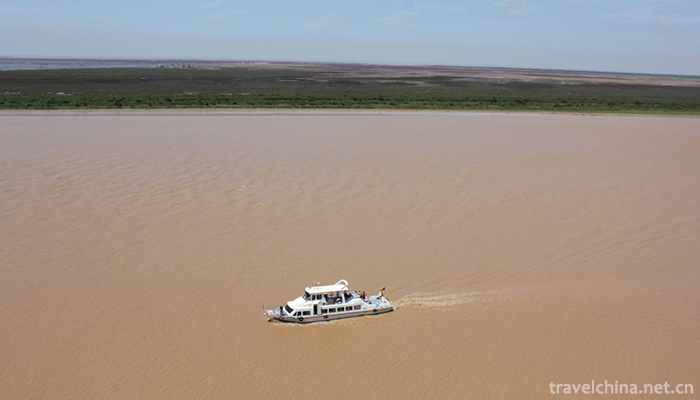

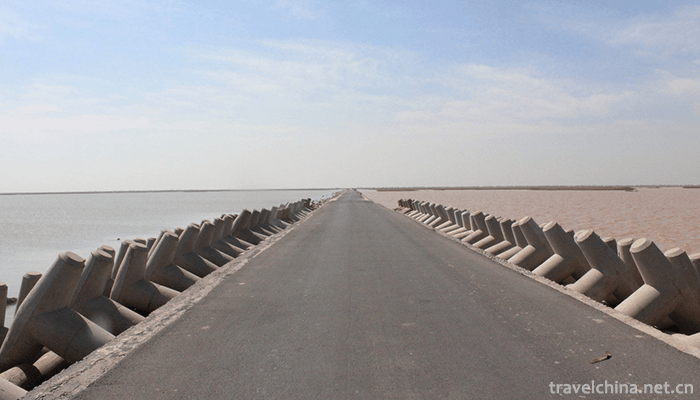
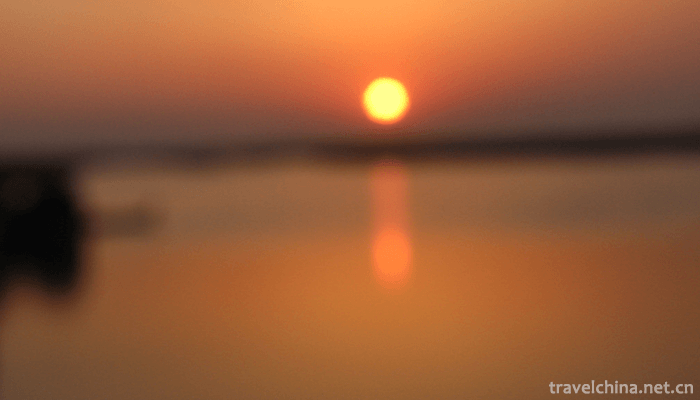
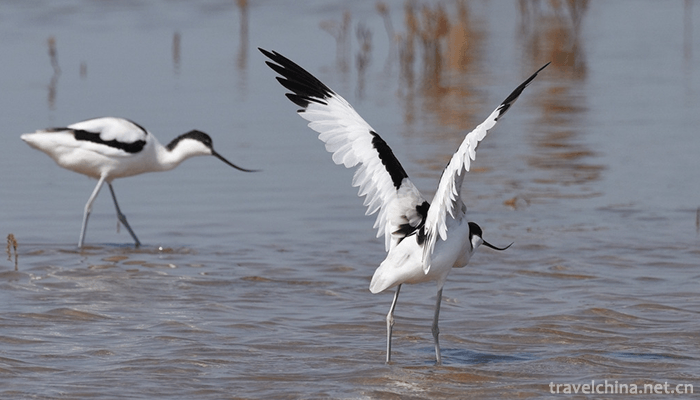
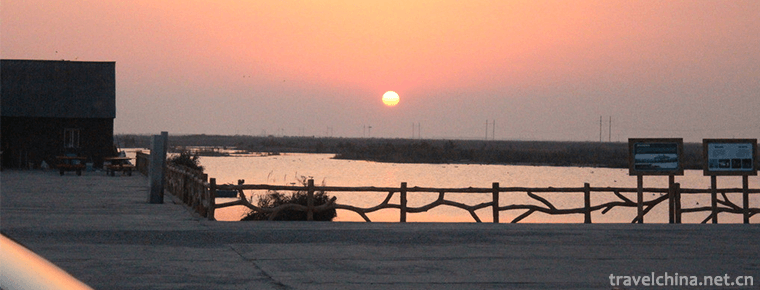
-
1.waterless rice noodle
Bait silk is one of the special snacks in Yunnan. It is mainly made from rice
Time 2018-10-17 -
2.Green Lake Park
Cuihu Park is located at the foot of Luofeng Mountain in Kunming City
Time 2018-10-21 -
3.Linzhi Basongcuo Scenic Area
Basongtao, also known as Caogao Lake, means "green water" in Tibetan. It is about 18 kilometers long. Its surface area is about 27 square kilometers.
Time 2018-12-12 -
4.CITIC Golf Seaside Resort
Shantou CITIC (China International Trust and Investment Corporation) Resort Hotel is a foreign-related tourist resort hotel affiliated to Shantou Company of CITIC South China Group.
Time 2018-12-22 -
5.Golden Sands Beach
Golden Beach is located in the southern end of Shandong Peninsula, the Yellow Sea coast of Qingdao Huangdao District, Golden Beach Road. It is bordered by the Yellow Sea in the South and stretches
Time 2019-01-26 -
6.Ming Xiaoling Mausoleum
The Ming Xiaoling Tomb is situated at the south foot of Zijinshan Mountain in Xuanwu District, Nanjing, under Dulongfu Playing Pearl Peak. It is adjacent to Zhongshan Tomb in the East
Time 2019-02-07 -
7.Yanling National Flower and Tree Expo Park
Yanling National Flower and Tree Expo Park (Yanling Flower and Tree Expo Park) is located in the eastern part of Xuchang City, Henan Province.
Time 2019-02-28 -
8.Korean Huajiali
The flower armor ceremony of the Korean nationality is one of the important rituals of the Korean nationality's birthday ceremony. Since ancient times, the Korean people have regarded respecting the e
Time 2019-04-16 -
9.Dujiangyan Drainage Festival
The Qingming Drainage Festival is a traditional festival in Dujiangyan, Sichuan Province. Every year during the Qingming Dynasty, Dujiangyan City welcomes the annual Qingming Drainage
Time 2019-04-28 -
10.Guwo Yushu Samurai Dance
Samurai dance is a unique style of etiquette folk dance spread in Yushu. It is called Guowa (or Guowa) in Tibetan. Guo refers to weapons in Tibetan. It means warriors with weapons. Wo refers to dancer
Time 2019-05-02 -
11.Ying Luohan
Yingluohan is a form of traditional folk entertainment which integrates martial arts and folklore in the traditional festival activities in Jinyun County, Zhejiang Province. This kind of activity also
Time 2019-07-14 -
12.Bao Shu Ya
Bao Shuya (the first 723 years or the first 716 years - the first 644 years). Si Surname, abalone His name is a famous uncle. Yingshang (now belongs to Anhui (person) the Spring and Autumn period Qi S
Time 2019-09-11